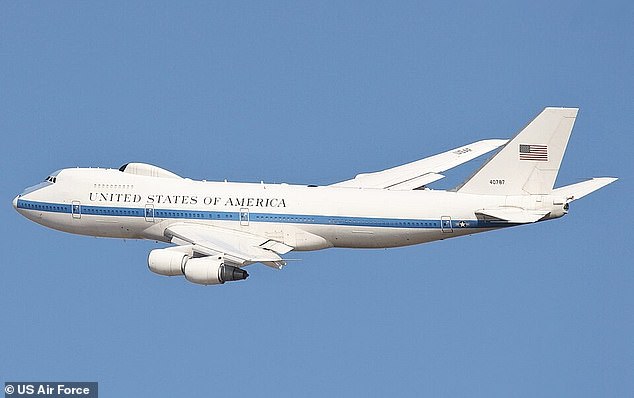
Air Force Clarifies ‘Doomsday Plane’ Flight Purpose Amid Nuclear Alert Speculation
Trump’s “Doomsday Plane” Sparks Alarm During Routine Flight Amid Iran Tensions
President Donald Trump’s heavily fortified Boeing E-4B “Nightwatch” aircraft—nicknamed the “Doomsday Plane”—was tracked flying from Louisiana to Maryland on Tuesday, triggering speculation about a potential crisis. The flight path, visible on public radar, raised concerns amid escalating Middle East tensions, though the Air Force clarified it was a pre-scheduled training mission.
[IMAGE: The E-4B "Nightwatch" in flight, captioned: The Doomsday plane is designed to survive nuclear attacks and coordinate military responses.]
The E-4B departed Barksdale Air Force Base in Louisiana, looped along the Virginia-North Carolina border, and landed at Joint Base Andrews near Washington, D.C., five hours later. Flight trackers noted its journey originated in Arizona earlier that day. The aircraft, one of four in the U.S. fleet, serves as a mobile command center during national emergencies, equipped to withstand nuclear blasts, cyberattacks, and electromagnetic disruptions.
Routine Mission or Strategic Signal?
While the Pentagon confirmed the flight was routine, its timing fueled speculation. It coincided with heightened U.S.-Iran tensions following Israeli airstrikes on Iranian nuclear sites, which killed over 200 people. Trump reportedly backs Israel’s campaign, demanding Iran’s “unconditional surrender.” Iranian Supreme Leader Ayatollah Ali Khamenei vowed retaliation, warning the U.S. against intervention: “Any military action will result in irreparable damage.”
[IMAGE: Map of the E-4B’s flight path, captioned: The aircraft traveled from Louisiana to Maryland, circling the East Coast.]
A Flying Fortress
The E-4B, a modified Boeing 747, features advanced communication systems, 67 satellite antennas, and can operate for a week without landing. Its shielded interior includes workspaces, conference rooms, and sleeping quarters for the president, defense officials, and staff. During past crises, it housed President George W. Bush after 9/11 and aided disaster responses like Hurricane Opal.
[IMAGE: Interior of the E-4B, captioned: The plane includes command centers, communications hubs, and resting areas for extended missions.]
Political Backdrop
The White House announced Trump will decide within two weeks whether to strike Iranian targets, escalating pressure on Tehran. Meanwhile, Secretary of the Air Force Dr. Troy Meink boarded an E-4B during a pre-planned visit to Air Force Global Strike Command, emphasizing readiness.
[IMAGE: Secretary Troy Meink boarding the E-4B, captioned: Officials stress the flight was part of standard operational training.]
Though tensions loom, the Air Force reiterated the E-4B’s flight was unrelated to global events. Yet, its presence underscores America’s preparedness amid growing volatility. Whether a training exercise or subtle warning, the Doomsday Plane’s journey remains a stark symbol of Cold War-era vigilance in modern geopolitics.
[IMAGE: Aftermath of Israeli strikes in Iran, captioned: Over 220 deaths in Iran have intensified calls for U.S. involvement.]
Word count: ~600


